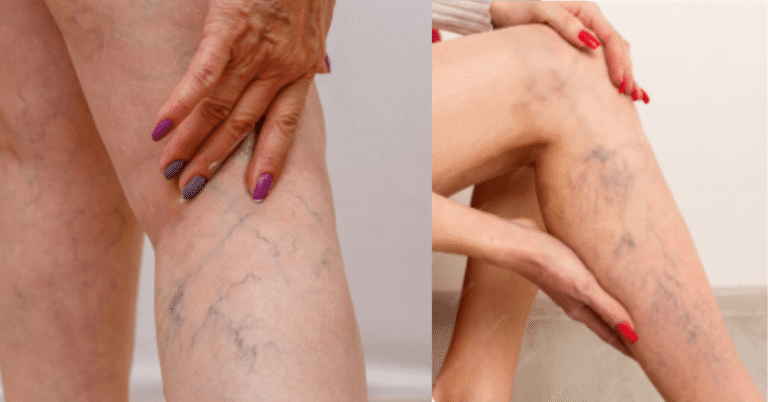Chronic venous insufficiency is a common yet often overlooked condition that affects the veins in the legs, leading to poor blood circulation and a range of uncomfortable and sometimes debilitating symptoms. This condition, while rarely life-threatening, can significantly impact quality of life if left unmanaged. Understanding its causes, symptoms, diagnosis, and treatment options is essential for anyone seeking relief and long-term vascular health.
What Is Chronic Venous Insufficiency?
Chronic venous insufficiency (CVI) occurs when the valves in the veins—particularly in the lower legs—become damaged or weakened. These valves are designed to help blood flow upward toward the heart. When they fail, blood can pool in the legs, leading to swelling, pain, and skin changes.
Unlike acute conditions such as deep vein thrombosis, CVI is long-lasting and progressive. It may start with mild symptoms and gradually worsen over time if not addressed properly.
Understanding the Causes of Chronic Venous Insufficiency
Several risk factors contribute to the development of chronic venous insufficiency. Most cases are linked to damaged vein valves, but the underlying causes can vary widely.
Common Causes and Risk Factors
-
Age: Aging naturally weakens veins and valves.
-
Obesity: Excess weight puts additional pressure on leg veins.
-
Pregnancy: Hormonal changes and increased blood volume during pregnancy can enlarge veins.
-
Prolonged Standing or Sitting: Jobs that require long hours on your feet or sitting can restrict blood flow.
-
Genetics: Family history plays a significant role.
-
Blood Clots: Previous clots can scar or block veins, reducing function.
Each of these factors disrupts proper blood flow, increasing the risk of CVI.
Recognizing the Symptoms of Chronic Venous Insufficiency
Symptoms often develop gradually and may seem minor at first. However, early recognition and intervention can prevent the condition from escalating.
Physical and Visual Signs
-
Leg swelling (edema), especially around the ankles
-
Aching or heaviness after standing for long periods
-
Itching or tingling sensations
-
Discoloration of the skin, often brownish around the ankles
-
Varicose veins, twisted or bulging visible veins
-
Open sores or ulcers, typically near the ankles
These symptoms can cause emotional stress, self-consciousness, and a diminished ability to perform everyday tasks. It’s essential to address both the physical and psychological toll CVI can take.
How Chronic Venous Insufficiency Is Diagnosed
Diagnosis starts with a detailed medical history and a physical exam. Health professionals look for visible signs and ask about symptoms. The most common tool used is duplex ultrasound, which helps visualize blood flow and valve function in the veins.
Other diagnostic tools may include:
-
Venography: Involves injecting dye to view vein structure via X-ray.
-
Photoplethysmography (PPG): Measures changes in blood volume.
-
Magnetic Resonance Venography (MRV): Offers a detailed, non-invasive view of deep veins.
Early and accurate diagnosis is critical for tailoring treatment strategies to individual needs.
Treatment Options for Chronic Venous Insufficiency
Treating chronic venous insufficiency involves a combination of lifestyle changes, medical management, and in some cases, surgical procedures. The goal is to improve blood flow, reduce symptoms, and prevent complications.
Conservative Management Techniques
Before exploring invasive options, doctors usually recommend conservative therapies:
Compression Therapy
Wearing compression stockings is often the first line of defense. These specially designed garments apply pressure to the legs, improving blood flow and reducing swelling.
Lifestyle Changes
-
Regular exercise: Walking helps pump blood upward through the legs.
-
Leg elevation: Keeping legs raised above heart level promotes drainage.
-
Weight management: Losing excess weight can relieve vein pressure.
-
Avoid prolonged standing or sitting: Taking breaks can encourage circulation.
Advanced Medical and Surgical Treatments
When conservative measures fall short, more aggressive treatments may be necessary.
Sclerotherapy
A chemical solution is injected into the affected veins, causing them to collapse and fade away over time.
Endovenous Thermal Ablation
This minimally invasive procedure uses laser or radiofrequency energy to close off faulty veins.
Vein Stripping and Ligation
In more severe cases, problematic veins may be tied off or removed surgically.
VenaSeal
A medical adhesive is used to seal the diseased vein shut, redirecting blood through healthy veins.
Emotional and Psychological Impact of CVI
Chronic venous insufficiency doesn’t just affect physical health—it can deeply influence emotional well-being. Patients often report:
-
Anxiety over visible vein changes
-
Shame or embarrassment wearing shorts or skirts
-
Frustration with daily swelling and discomfort
-
Fear of developing ulcers or infections
Addressing the emotional side of CVI is crucial for holistic healing. Support groups, counseling, and open communication with healthcare providers can make a big difference.
Preventing Chronic Venous Insufficiency
While not all cases can be prevented, certain steps significantly lower your risk:
-
Exercise regularly
-
Maintain a healthy weight
-
Elevate legs during rest
-
Avoid tight clothing that restricts circulation
-
Wear compression stockings if advised
Making these changes early—even before symptoms arise—can protect your vein health for years to come.
Comparing CVI Treatment Options
Here’s a side-by-side comparison of common treatment options for chronic venous insufficiency to help you make informed decisions:
| Treatment Option | Cost | Efficiency | Ease of Use | Scalability | Benefits |
|---|---|---|---|---|---|
| Compression Therapy | Low | Moderate | Easy | High | Non-invasive, effective for mild cases |
| Sclerotherapy | Moderate | High | Moderate | Medium | Good for varicose and spider veins |
| Endovenous Ablation | High | Very High | Moderate | Low | Quick recovery, highly effective |
| Vein Stripping | Very High | High | Complex | Low | Best for large, severely damaged veins |
| VenaSeal | High | Very High | Easy | Medium | Minimally invasive, no compression needed |
This table highlights both financial and practical considerations, helping patients and providers align on the best course of action.
When to See a Doctor
Do not ignore persistent leg discomfort or visible changes in your veins. If you notice swelling, skin discoloration, or pain that worsens after standing, consult a healthcare professional. Timely intervention can halt the progression of chronic venous insufficiency and restore comfort and mobility.
Living with Chronic Venous Insufficiency
While chronic venous insufficiency is a lifelong condition, it is manageable. With the right approach—balancing lifestyle habits and medical treatments—many people lead full, active lives.
Taking control starts with awareness. By understanding the signs and knowing your options, you empower yourself to take proactive steps toward better health and peace of mind.
ALSO READ; AngelicAtlol Facial: Unveiling the Ultimate Skincare Secret
FAQ’s
What is the main cause of chronic venous insufficiency?
The main cause is valve damage in the leg veins, which prevents blood from flowing back properly to the heart. This damage may result from aging, obesity, blood clots, or prolonged standing or sitting.
Can chronic venous insufficiency be cured?
While CVI can’t always be completely cured, its symptoms can be effectively managed. Treatment focuses on improving blood flow, relieving discomfort, and preventing complications.
Is walking good for chronic venous insufficiency?
Yes, walking is highly beneficial. It activates the calf muscles, which help push blood back toward the heart, reducing swelling and improving circulation.
What foods are good for vein health?
Foods rich in antioxidants, fiber, and vitamin C—such as leafy greens, citrus fruits, and berries—can strengthen veins and support healthy circulation.
How do I know if my CVI is getting worse?
Signs of progression include increased swelling, worsening skin discoloration, leg ulcers, and more frequent pain or heaviness, especially after standing.
Should I wear compression stockings all day?
Yes, unless otherwise directed by your doctor. Most people wear them during waking hours, especially while standing or walking, to maximize their benefits.

